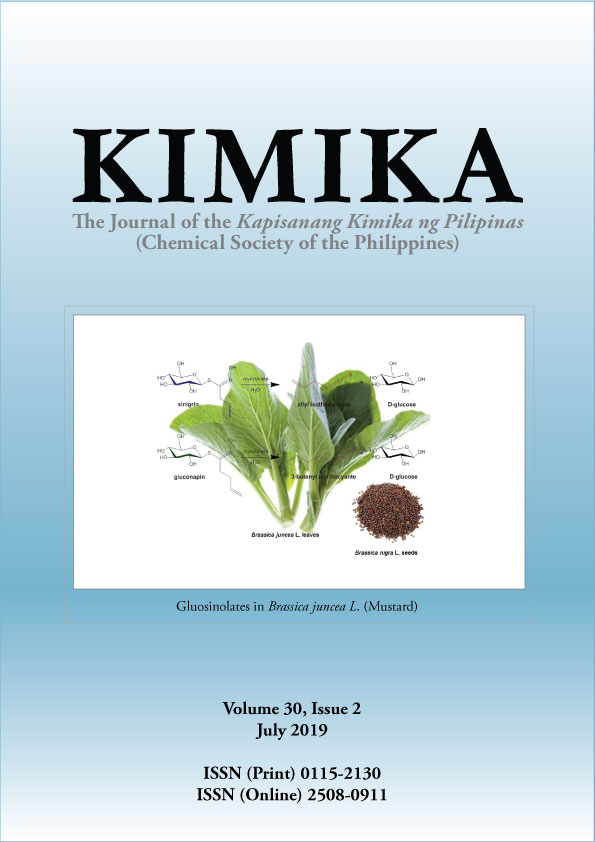Water Quality and Removal Efficiency of Suspended Solids, Copper, Lead, and Oil/Grease in Malihao River, Negros Occidental, Philippines Using Bivalve Shells
DOI:
https://doi.org/10.26534/kimika.v30i2.49-60Keywords:
suspended solids, heavy metals, oil/grease, bivalves, Malihao riverAbstract
Malihao river was reported to have a decline in water quality over the years due to the increasing human activities surrounding the river. Various pollutants were present in the river such as suspended and dissolved solids, copper, lead, cadmium, and oil/grease; and their concentration levels are beyond the set limit by the national guidelines. The removal of these compounds was studied using waste bivalve shells is a suggested remedy, as they are locally available and abundant in the region. Total suspended solids were removed using chitosan from Perna viridis up to 81%; copper and lead were removed using Polymesoda erosa in a packed column; and oil/grease was efficiently removed using Crassostrea spp. up to 80-100%. Additional monitoring efforts in the locality should be done to properly manage this body of water to prevent from further deterioration.
Downloads
Published
How to Cite
Issue
Section
License
Authors who publish with this journal agree to the following terms:
- Authors retain copyright and grant the journal right of first publication with the work simultaneously licensed under a Creative Commons Attribution License that allows others to share the work with an acknowledgement of the work's authorship and initial publication in this journal.
- Authors are able to enter into separate, additional contractual arrangements for the non-exclusive distribution of the journal's published version of the work (e.g., post it to an institutional repository or publish it in a book), with an acknowledgement of its initial publication in this journal.
- Authors are permitted and encouraged to post their work online (e.g., in institutional repositories or on their website) prior to and during the submission process, as it can lead to productive exchanges, as well as earlier and greater citation of published work (See The Effect of Open Access).





